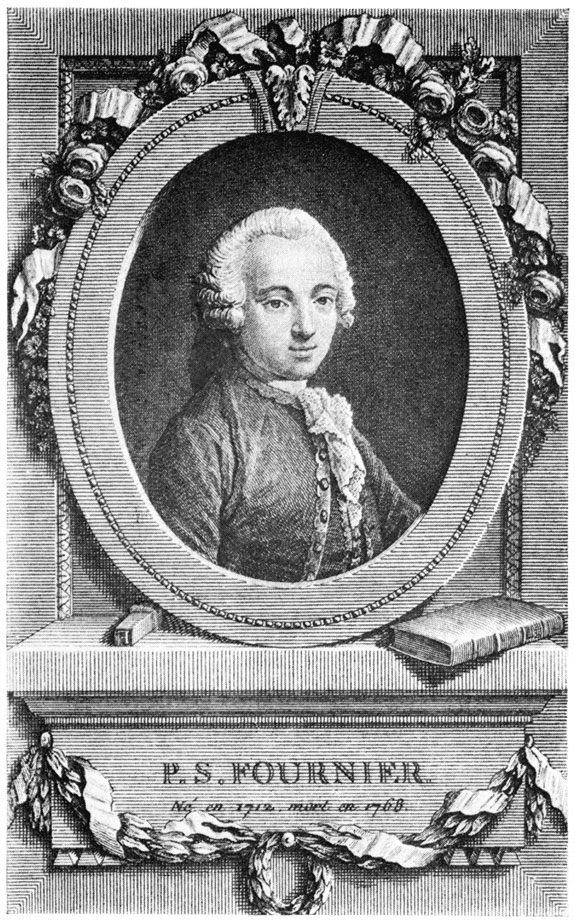September 15

Detail of the frontispiece from ""Fournier; The Compleat Typographer" by Allen Hunt. (Thanks Paul!)
In the city of Paris on this day in 1712 was born into the family of the printer and typefounder Jean Claude Fournier, a son—Simon Pierre or as he is more commonly known, Pierre Simon. The younger Fournier made a unique contribution to typefounding, both in theory and practice, by inventing a system of type measurement and by writing a book on typefounding in which he outlined his methods. “The invention of these points is the first service which I renedered to printing, 1737. Obliged then to commence a long, painful, and laborious career by the graving of all the punches necessary to form the establishment of my foundery, I found no rule established which could guide me in fixing the body of the characters which I had to make, and I was thus under the necessity of forming them for myself.
Finding the lack of standards in the size of type most annoying, Fournier le jeune set to work to correct the situation by a method best described in his own words: “This then is what engaged me to disentangle this chaos, and to give these matters an order which they have never before had. I think I have the happiness to succeed in it, with an exactness and precision which leaved nothing to be desired, by the invention of Typographical Points. It is nothing more than the division of the bodies of characters by equal and determinate degrees, which I call Points. By this means, the degrees of distance and affinity of the bodies may be known exactly. They can be combined together in the same manner as numerical signs; and as two and two make four, add two, it will become Nonpareille, which is equal to six points, added to another Nonpareille will make together a Cicero, which has twelve points, add again a Nonpareille, you will have eighteen points, or a Gros-romain. . . .
“In order to combine the bodies, it will be sufficient to know the number of Typographical Points of which they are composed. . . . For this purpose, I have fixed these points at the exact sizes they ought to have, in the scale which is at the head of the Table of Proportions. . . . The table exhibits at the top a fixed and definite scale, which I divide into two inches, the inches into twelve lines, and the line into six typographical points; the total is 144 points. The first small divisions are of two points, which is the exact distance which there is from a Petit-texte to a Petit-romain, or from that to a Cicero, &c.”
While the point system today varies mathematically from that of Fournier, the terminology remains the same. The Anglo-American Point System, evolved in 1886, has as is basic unit a point of .01383″ while that of Fournier measured .0137″. Neither of these measurements, nor the present-day European system devised by Didot, adhere to the metric system and are of course inexact by modern mathematical standards. But we must credit Fournier with the first overture towards precision procedures in the composing room.